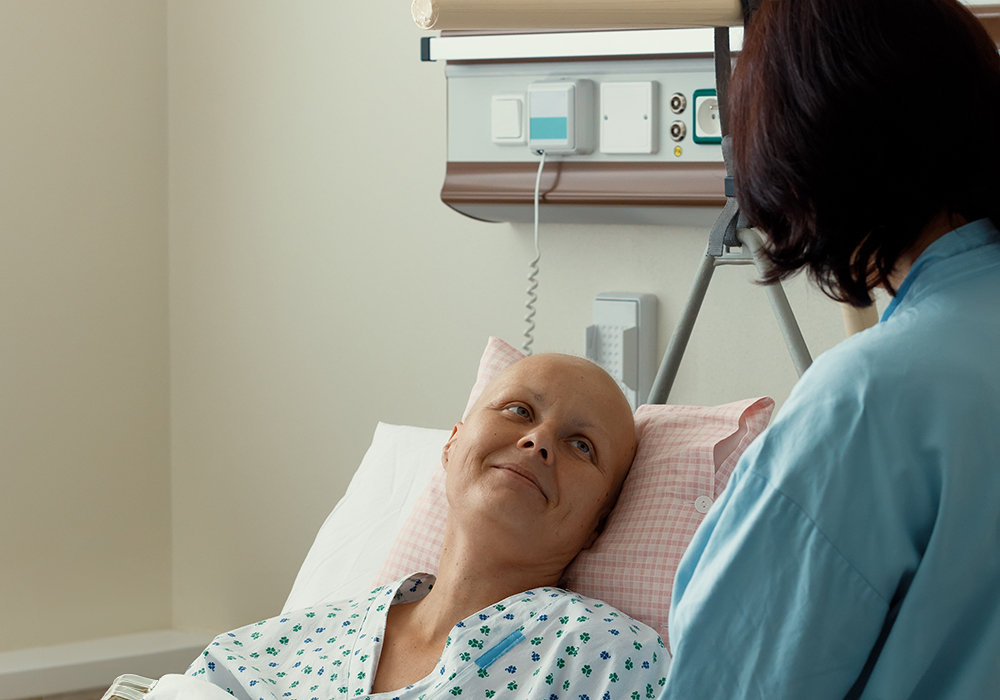Nurse practitioners (NPs) are key to improving the quality of care for their patients with cancer through advocacy—both in institutions across the country and in legislative offices on Capitol Hill. With the intent to remove barriers so NPs can help move the needle for healthcare policy, ONS’s Center for Advocacy and Health Policy held the summit, “Policy Barriers and Opportunities to NPs in Oncology,” on April 10, 2018, in Washington, DC.
One of the most important but often challenging steps in the evidence-based practice (EBP) process is ensuring that the change we wanted to happen actually occurred. After a practice change has been implemented, it’s important to ask if the expected outcome was achieved. Patient-related outcomes can be psychosocial (change in symptoms such as depression or anxiety), physiologic (reduction in catheter-associated urinary tract infections), or functional (increased exercise or mobility).
Which of the following is NOT an ASCO/ONS Chemotherapy Administration Safety Standard?
A. Chemotherapy orders include sequencing of agents, when applicable.
B. A licensed independent practitioner is on-site and readily available to staff where chemotherapy is administered.
C. Two chemotherapy-competent RNs must be in the infusion area at all times when chemotherapy is infusing.
April is designated as National Cancer Control Month in the United States. It’s a federally endorsed observation, annually encouraged by a proclamation from the president. April is dedicated to raising awareness for cancer prevention and treatment throughout the country. Approved through a joint resolution by Congress in 1938, the yearly presidential announcement serves as a reminder to all Americans that awareness of the factors that cause or prevent cancer are crucial to the public health.
An international survey of 86 genetic testing labs showed inconsistent protocols and standards for analyzing the BRCA1 or 2 cancer susceptibility genes and their variations. The results were reported in NPJ Genomic Medicine.
On April 17, 2018, the U.S. Food and Drug Administration approved fostamatinib disodium hexahydrate tablets for the treatment of thrombocytopenia in adult patients with chronic immune thrombocytopenia who have had an insufficient response to a previous treatment.
Oncology nurse navigators (ONNs) fill a critical, ever-growing role in cancer care settings across the country, providing patients with the resources, education, and care coordination they need to successfully navigate their cancer journey. By reducing barriers and burdens on patients and their caregivers, ONNs help lead patients from initial diagnosis, during treatment, into survivorship, and often through end-of-life care.
John is a 62-year-old man diagnosed with metastatic non-small cell lung cancer (NSCLC). His tumor tested positive for high PD-L1 expression, and he began pembrolizumab treatment. John presents to the clinic for his third treatment and mentions that during the past week his arms and chest have been itchy and he has noticed a red, bumpy rash on his chest. When assessing John’s skin, you note a maculopapular rash on both of his upper extremities, anterior chest, and upper abdomen. What would you do?
On April 16, 2018, the U.S. Food and Drug Administration (FDA) granted approvals to nivolumab and ipilimumab in combination for the treatment of intermediate or poor risk, previously untreated advanced renal cell carcinoma.
Adverse events and traumatic moments send shockwaves through the entire care team. As families grieve the loss of a loved one, providers can often suffer from feelings of overwhelming guilt, remorse, or helplessness. When clinicians struggle with the aftermath of a tragic care event, they become known as second victims. Second victim experiences can lead to lapses in safety and care and could be potentially dangerous for future patients.





